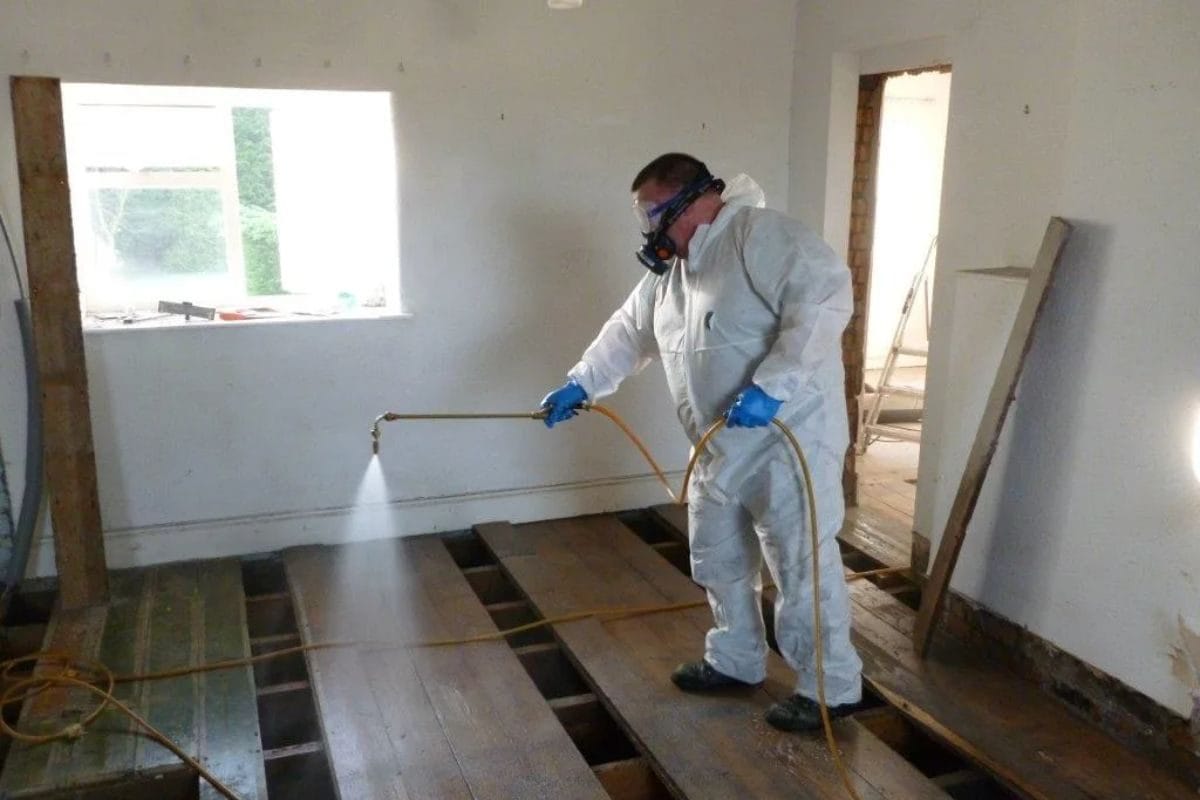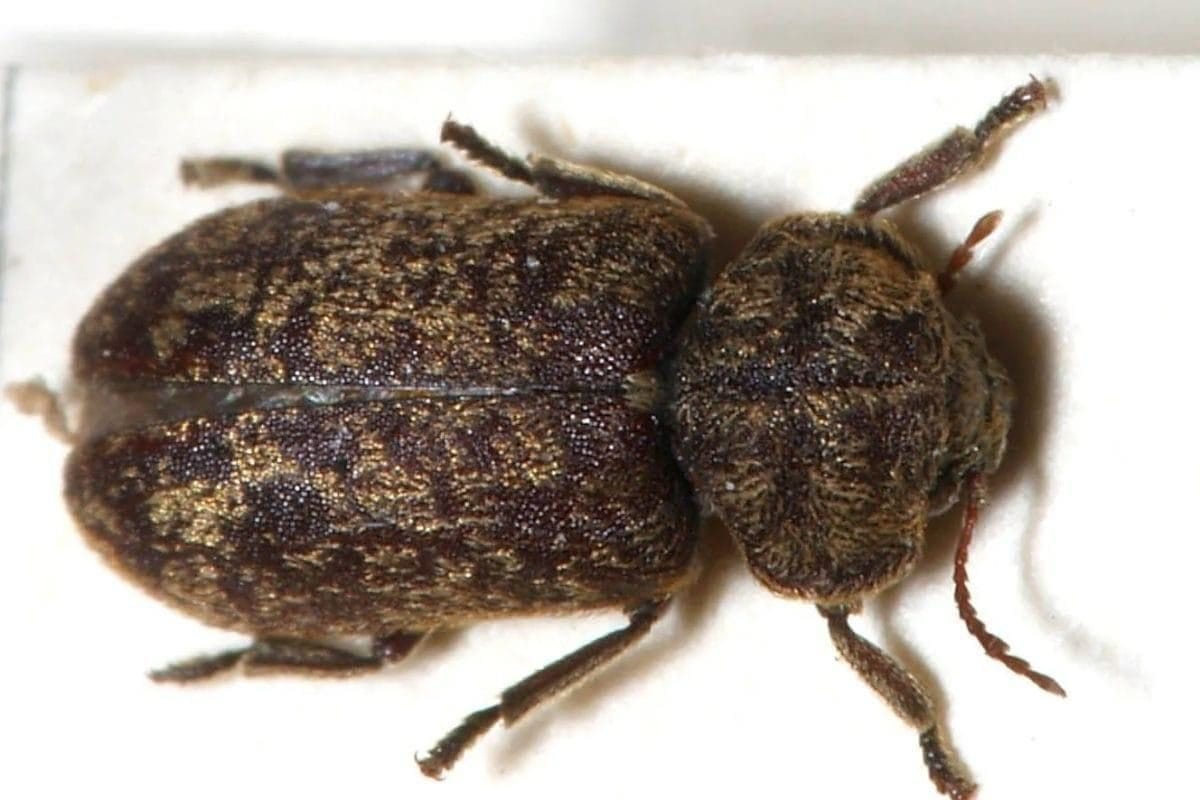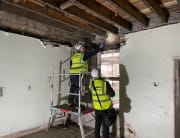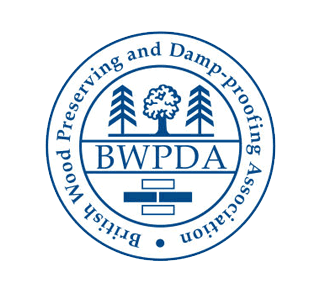Published on 02/06/2025/ & Updated on 10/10/2025/.
Woodworm may be small, but the damage they cause to your home can be anything but. Often going unnoticed until the signs are impossible to ignore, these timber-boring insects can quietly compromise the integrity of your home.
Catching an infestation early is crucial, as untreated woodworm can weaken wood to the point of collapse, potentially leading to costly repairs. However, many homeowners aren’t sure what to look for, and may not realise their property is at risk until years down the line.
In this guide, we’ll walk you through the key signs of a woodworm infestation and help you understand what to do next if you spot them.
What Is Woodworm?
Before we get into the signs of woodworm, it’s a good idea to understand what woodworm is first.
Despite the name, woodworm isn’t actually a worm; it’s the term used to describe the larvae of wood-boring beetles, specifically the Common Furniture Beetle.
These insects lay their eggs in cracks or crevices of wooden surfaces. The real damage begins once the eggs hatch. The larvae tunnel deep into the timber, feeding on the cellulose within the wood for several years before emerging as adult beetles to restart the woodworm life cycle.
As the larvae stay hidden within the wood, it can be incredibly difficult to detect an infestation early. By the time the tell-tale signs, like small holes or crumbling timber, become visible, the damage may already be extensive.
What makes things more complicated is that not all visible holes indicate an active problem. Some could be remnants from years ago, or even from before the timber was used in your property. This is why a professional assessment is essential if you suspect woodworm activity.

By the time the tell-tale signs of woodworm, like small holes or crumbling timber, become visible, the damage may already be extensive.
Signs of Woodworm Infestation
Now that you know some more about woodworm, what exactly should you be looking out for?
1. Small Exit Holes
One of the most recognisable signs of a woodworm infestation is tiny, round holes in the wood, usually around 1-2mm in diameter.
These holes are made when the adult beetles emerge from the timber after years of feeding inside it as larvae. They’re essentially the final step in the beetle’s life cycle before reproduction begins again.
Fresh exit holes tend to have clean, sharp edges and may reveal lighter-coloured wood beneath the surface. They usually appear from late spring through to early autumn. On the other hand, older or inactive infestations leave behind darker, more worn holes with less defined edges, sometimes coated in debris.
It’s important to note that not all holes in wood are caused by woodworm. Some may be due to old infestations, other wood-boring insects, or even the natural characteristics of the timber itself.
2. Fine Powder or ‘Frass’
Another sign of woodworm, especially active woodworm, is a fine, dust-like substance known as frass. This powder is a by-product of larvae tunnelling through the timber, and it often collects just below or beside the small exit holes created by emerging adult beetles.
Frass can sometimes go unnoticed, especially in places like lofts or on light coloured wood, but it’s easier to spot on darker surfaces or around furniture. If you find tiny piles of this bore dust near cracks or holes in wooden structures, there’s a good chance you’re dealing with an active infestation.
Interestingly, the texture and appearance of the frass can also help identify which type of wood-boring beetle is responsible, which is incredibly useful when it comes to choosing the right treatment.
Which brings us to…

Frass can sometimes go unnoticed, especially in places like lofts or on light coloured wood, but it’s easier to spot on darker surfaces or around furniture.
3. Spotting Live Beetles Indoors
If you start noticing small beetles crawling or flying around your home, particularly near wooden surfaces, it could be a sign that woodworm is present and active.
These adult beetles usually emerge from the timber between May and October, when they exit their tunnels in search of a mate to continue the life cycle.
While they only live for a short time, typically just a few weeks, their presence often points to a much longer-term problem hidden inside your wood. You might spot them gathering in specific areas of your home, often near floorboards, furniture, or beams where the infestation is concentrated.
Types of Woodworm Beetle
Several types of wood-boring beetles are common in the UK, each with different sizes and appearances. These include:
- Common Furniture Beetle: Found in both soft and hardwood, this beetle lays 30-40 eggs per cluster, while the larvae feed for up to 3 years.
- Deathwatch Beetle: Damaging to older buildings, this beetle targets hardwoods already affected by fungal decay; its life cycle can extend beyond 10 years.
- Wood Boring Weevil: Linked to damp, decayed timber, these beetles feed on fungi, instead of healthy wood. Moisture control is often key to stopping them.
- House Longhorn Beetle: A threat to softwoods, this beetle grows up to 25mm long and can cause severe damage, leaving large oval exit holes.
- Powder Post Beetle: Will infest green, freshly cut oak, which is high in moisture content. Green Oak is commonly used as a building material.
Whether they’re a few millimetres long or closer to an inch, if you’re seeing them inside your property, it’s time to take a closer look at the surrounding timber for other signs of woodworm activity.
At Protectahome, we can help you identify the extent of woodworm damage in your home and recommend the most effective treatment plan. Get in touch with us today.

Woodworm beetles live for a short time, typically just a few weeks, but their presence points to a longer-term problem hidden inside your wood.
4. Crumbling or Weakened Timber
Timber that feels brittle, crumbles at the edges, or gives way under pressure is often a sign of a long-standing woodworm infestation.
As larvae bore their way through wood over time, they leave behind a network of tunnels that can compromise the structural integrity of floorboards, beams, joists, and other timber elements.
If you’ve ever put a chair leg or foot through a weakened floorboard, there’s a chance that woodworm damage is to blame. In many cases, this kind of deterioration is most visible around the edges of boards or in roof timbers, where damage might go unnoticed until it’s too late.
That said, weakened wood isn’t always caused by woodworm. Other issues, like dry rot, can cause similar symptoms. That’s why it’s essential to have a professional inspection to confirm the cause before carrying out repairs or treatments.
How Can We Help
So, to sum up, what are the signs of woodworm?
In short, the signs of woodworm include small exit holes in wood, weakened timber, live beetles indoors, and fine ‘frass’ dust around wood surfaces.
These aren’t the only signs of a woodworm infestation, however, and they don’t always tell the full story.
That’s where we come in.
At Protectahome, our experienced surveyors are trained to identify the presence of wood-boring insects, as well as the specific species involved and the extent of the damage.
We can recommend the most effective treatment plan for your home, whether that involves targeted chemical solutions, moisture control, or improved ventilation.
Get in touch with us today to find out more.














